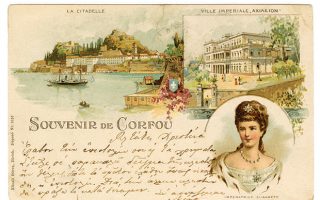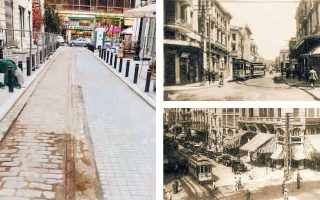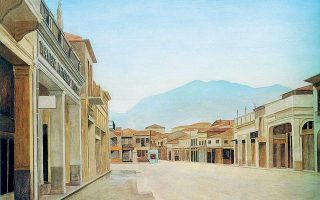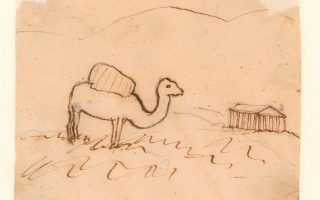National Historical Museum pays tribute to Greek Revolution
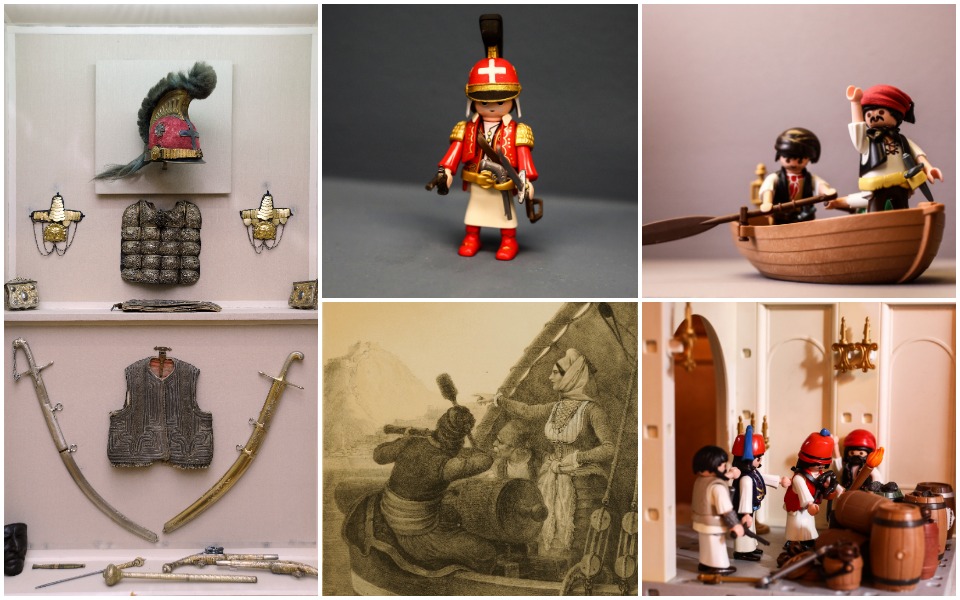
The National Historical Museum in Athens has launched a fascinating program of exhibitions, publications and events celebrating the 200th anniversary of the Greek War of Independence, which began with a proclamation of revolution against Ottoman rule in the Peloponnese on March 17, 1821.
According to the museum’s deputy director, Maria Papanastasiou, the program aspires to “reintroduce the Greek and international public to the ideas, causes, people, events and consequences of the 1821 war.” This will be accomplished “via a comprehensive narrative that will encourage reflection, conversation and creativity,” she said at a recent press conference.
The NHM was founded in 1882 and was the first museum in the newly liberated Greek state. Aiming to mark what is perhaps the most significant event in the country’s modern history, it has teamed up with a plethora of state agencies, private foundations and individuals.
“Talking about 1821 is like talking about a mountain that never stops growing. We are dealing with a huge number of testimonies and pieces of information, but also huge expectations. How we approach the revolution is instrumental to our knowledge of ourselves today,” said Thanos Veremis, professor emeritus of political history at the University of Athens and one of the members of the program’s supervising committee.
The program of events is also an opportunity to reintroduce the public to the museum, according to creative director Dimitris Papazoglou. His approach to the bicentennial, he added, is one of “charming fragmentation.”
“Given that the revolutionaries of 1821 came from many different walks of life and did not have a homogeneous look, it would be a mistake for the program’s visual identity to be summed up by a single symbol or logo,” he explained.
On Sunday, October 13, the museum will be inaugurating an exhibition on daily life in Greece in the early 19th century and important events from the War of Independence narrated through dioramas using a series of Playmobil figures designed for the event.
The program includes two photography exhibitions and publications of Greek translations of 19th century texts by philhellenes. It ends in March 2021 with an exhibition at the Old Parliament on the revolution and its impact, focusing on its heroes and on the social and ideological shifts that influenced the prevailing mind-sets before and after 1821.
Sections of this show will go on tour, and each of the different venues will add to the exhibits with their own, pointing to how different parts of the country were affected by the Greek Revolution.
Playmobil dioramas
It’s Easter week, 1819, and I’m in Parga, which came under British rule in 1814. After several attempts to sack it, Ali Pasha found a way to finally get his hands on the fortified seaside Epirote city: He bought it from the British for 150,000 pounds sterling. The deal was sealed with the colonial governor of the Ionian Islands, Thomas Maitland, a famous Turcophile, and signed in Ioannina on May 17, 1817.
One of Ali Pasha’s terms was that the residents be evicted from the city. His order is to be carried out on Good Friday. The streets are teeming with women running amok with babes in arms, old men and women weeping on the thresholds of their homes, and men laden like oxen with family belongings. The Pargans are going, but they refuse to leave behind the remains of their forebears to stay buried in conquered soil. They dig them up and burn them in the main square so that they can at least take some of their ashes with them.
I see it all happening. No, I am not in a time machine. I am on the first floor of the National Historical Museum at the “Refugees of Parga” display, during a preview of the Playmobil diorama exhibition.
The show aims to present an original, eye-catching and informed approach to the period that is directed mainly at children. Needless to say, the dioramas, in which people are depicted by Playmobil figures, are sure to do the trick.
It consists of 20 dioramas of different sizes, consisting of nearly 1,500 figures in scenes of daily life in Greece in the early 19th century and snapshots from the 1821 War of Independence.
Apart from the exodus of the Pargans, other important chapters that are brought to life include the Great Oath of the Filiki Eteria underground revolutionary organization; Filiki Etairia leader Alexandros Ypsilantis’ crossing of the Prut River to muster Russian support; one of the earliest victories against the Turks in the Siege of Tripolitsa; a naval battle between the Greek and Turkish fleets; the death of the influential priest Papaflessas at the Battle of Maniaki, and Ibrahim kissing his head in a sign of respect postmortem; and the Exodus of Mesolongi.
At the same time, more than 80 protagonists in the War of Independence – Greeks, philhellenes and Turks, men and women – who played an important role in how events played out are depicted by Playmobil figures, along with a description of who they were and what they did.
The exhibition is designed and supervised by three National Historical Museum curators: art historian Natassa Kastriti, archaeologist Panagiota Panariti and historian Regina Katsimardou.
“The idea came about as a result of Petros Kaminiotis’ work,” they say, referring to a young artist who created a series of customized Playmobil figures dressed in traditional Greek folk costumes.
“The inspiration for the composition of the dioramas and for using Playmobil figures to depict historical figures came mainly from works of art – engravings and paintings – from the early 19th century in the museum’s collection and elsewhere,” they add.
The start of the revolution is shown taking place in the Peloponnese, with the classic scene of Metropolitan Germanos of Patra raising the banner with the cross at the Monastery of Agia Lavra.
Historians have disputed this account of how the revolution was declared, though this is still the one that prevails in school history books.
“The line followed by school books was dictated by the engravings we have from that time,” says Kastriti. “Without trying to ‘fix’ the historical narrative, we have tried to disengage from the prevalent approach so as to give visitors food for thought.”
The exhibition starts with a section on philhellenism and a representation of the Parthenon. There are no minarets on the Acropolis, as was the case during the Turkish occupation, nor has the citadel been damaged by Francesco Morosini’s shelling. It is, instead, depicted as it was in ancient times.
“It is shown in an idealized version, because this is how the philhellenes of the time insisted on seeing it, in their mind’s eye, when they visited the Parthenon,” says Panariti.
The narrative of the revolution ends with the assassination of Ioannis Kapodistrias in Nafplio in 1831.
The dioramas were built by collectors Giorgos Angelidis, Denis Vagopoulos, Angelos Giakoumatos and Vassiliki Fato, while the historic figures were made by Stelios Mylonas. They all worked on the project pro bono, while Playmobil has sponsored the show and donated the materials needed for the constructions.
The show is expected to be a success. “We see it as an opportunity to change the museum’s image,” says Katsimardou. “Sure, school pupils know about it, but we don’t want it to be associated only with compulsory school field trips which can be, admittedly, boring at times. We want to show our young and older visitors that history can be fun and that we’re not the stuffed shirts they may think us to be.”
The exhibition runs through May 2020 at the National Historical Museum (13 Stadiou, tel 210.323.7617, www.nhmuseum.gr). Opening hours are Tuesdays to Sundays from 8.30 a.m. to 2.30 p.m. The Playmobil figures created for this show are not on sale at the museum or at stores.
